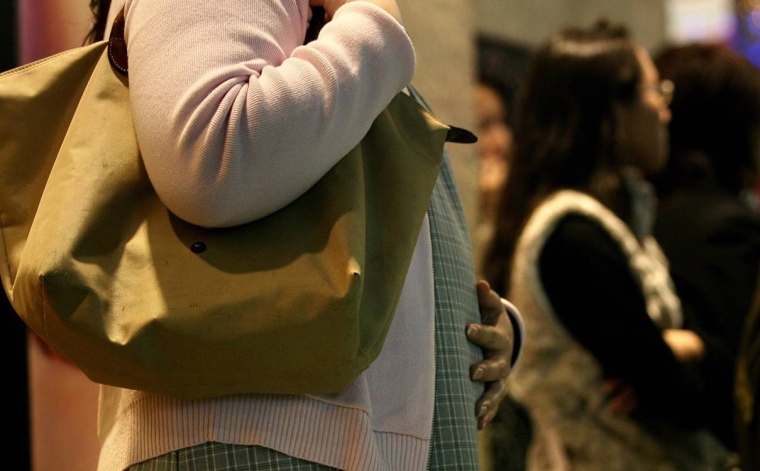
Recent official pronouncements in China have sparked speculation that tighter restrictions on abortion may be in the offing. Six months ago, the Chinese State Council issued guidelines to lower the number of abortions performed for non-medical reasons. And in February, China’s family-planning association announced that the authorities would launch a special abortion intervention campaign to reduce unwanted pregnancies and abortions among teenagers.
But these official interventions, under the guise of “enhancing women’s reproductive health,” are in fact a response to China’s growing fertility crisis. The one-child policy, which was implemented nationwide in 1980, forced down China’s fertility rate for two generations, and the introduction of the two-child policy in 2016 has failed to boost it. Even according to the inflated official figures, China’s fertility rate was only 1.3 children per woman in 2020 and 1.1-1.2 children per woman in 2021, well below the rates of 1.8, 1.7, and 1.5 predicted by the Chinese authorities, the United Nations, and the US Census Bureau, respectively.
As a result, the authorities announced a population increase of only 480,000 in 2021, compared to increases of two million in 2020 and 4.7 million in 2019. It therefore seems inevitable that China’s population will begin to decline in 2022, nine years earlier than expected. China is facing a demographic crisis that exceeds the imagination of the Chinese authorities and the international community.
In fact, China’s demographic crisis is much worse than official figures suggest. That is why the authorities have rushed out a series of measures over the past few months, including restrictions on abortion. Likewise, crackdowns on private tutors are part of an effort to lower the cost of parenting.
But reducing the incidence of abortion in China is easier said than done. In the past, the authorities regarded the country’s large population as a burden, and the one-child policy not only encouraged women to have abortions but also involved the government forcing them to do so. From television screens to giant outdoor billboards to roadside electricity poles, abortion advertisements are everywhere in China. Abortion is regarded as casually as dining out is, and is widely available in hospitals and clinics.
Unsurprisingly, China’s abortion ratio, or the number of abortions per 100 pregnancies, is very high by international standards, at 43 in 2020. That compares to ratios of 15 per 100 pregnancies in Japan, 13 in Taiwan, 19 in the United States, and less than three in India in recent years. One consequence of China’s high abortion rate has been a rapid increase in the infertility rate, from 1-3% in the early 1980s to 18% in 2020 – much higher than in developed countries such as the US.
Abortion is of course a highly sensitive issue, pitting a woman’s choice not to have a child against opponents’ view that fetuses have rights. Roe v. Wade, the US Supreme Court’s landmark 1973 decision recognising a constitutional right to abortion, set off what some have called the “Second Civil War,” and US lawmakers have subsequently sought to impose several restrictions, including those contained in the 2003 Partial-Birth Abortion Ban Act.
Under China’s brutal one-child policy, abortion was a battleground between government coercion on the one hand, and parents’ reproductive rights on the other. But in 2021, the Chinese authorities further loosened family-planning rules, permitting households to have three children, rather than two, and they are expected soon to abandon their population-control policy entirely.
Such a move will, one hopes, trigger a corresponding shift in attitudes in China regarding childbirth, human dignity, and human rights. While the US and many other countries have long debated abortion and reached some consensus and compromise, the Chinese have not. China will no doubt learn from America’s efforts to limit abortion, but its measures will probably not be as strict as those in the US and Russia. And prohibiting abortion entirely will be impossible.
Even if China restricted abortion as tightly as the US does, its abortion ratio probably would still be much higher than America’s. Although the Chinese government has been cracking down on sex-selective abortions, the sex ratio at birth had long been as high as 120 boys per 100 girls, well above the normal ratio of 102-106 boys per 100 girls. Even in 2021, after five years of the two-child policy, the ratio was still 112 boys for every 100 girls.
Reducing the abortion rate will require China also to strengthen family values, provide better sex education to teenagers, and improve young people’s employment prospects and parenting abilities. Without such coordinated reforms, merely restricting abortion will be counterproductive. It could even trigger other social crises, such as an increase in the number of abandoned children and a spike in illegal abortions, which would threaten the health and lives of many women.
Because China’s past population policies have always been associated with human-rights violations, the international community is rightly on constant alert for any hint of a change in government thinking. Chinese policymakers must now learn from their mistakes. That means seeing the country’s population as an asset rather than a burden and welcoming rather than discouraging new life.
Yi Fuxian, a senior scientist in obstetrics and gynecology at the University of Wisconsin-Madison, is the author of Big Country with an Empty Nest. Copyright 2022 Project Syndicate, here with permission.
4 Comments
A country that has grown to be a superpower in a few decades. No 2 in the world by GDP, and by other measures, the winner. In 2018, China was the only country building infrastructure in Africa.
Despite such achievements, failures in society, one of of which a declining birthrate.
Leading sources of foreign direct investment (FDI) into Africa between 2014 and 2018 - China 16%, USA 8%, France 8%, UAE 6%, UK 5% and it is possible many African countries invest in their own infrastructure.
Best if China's population is allowed to decline dramatically. Better chance of humans making it through the coming resource/pollution bottleneck.
Lower birth rates are the young peoples way of saving the planet. The older generations currently in power, have failed to do enough

We welcome your comments below. If you are not already registered, please register to comment
Remember we welcome robust, respectful and insightful debate. We don't welcome abusive or defamatory comments and will de-register those repeatedly making such comments. Our current comment policy is here.